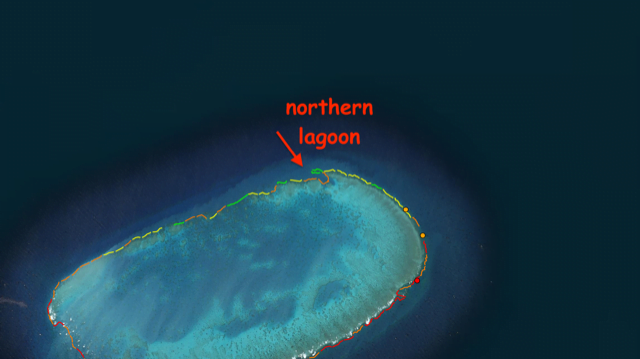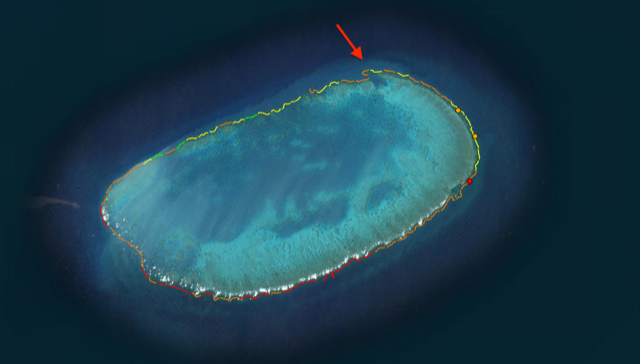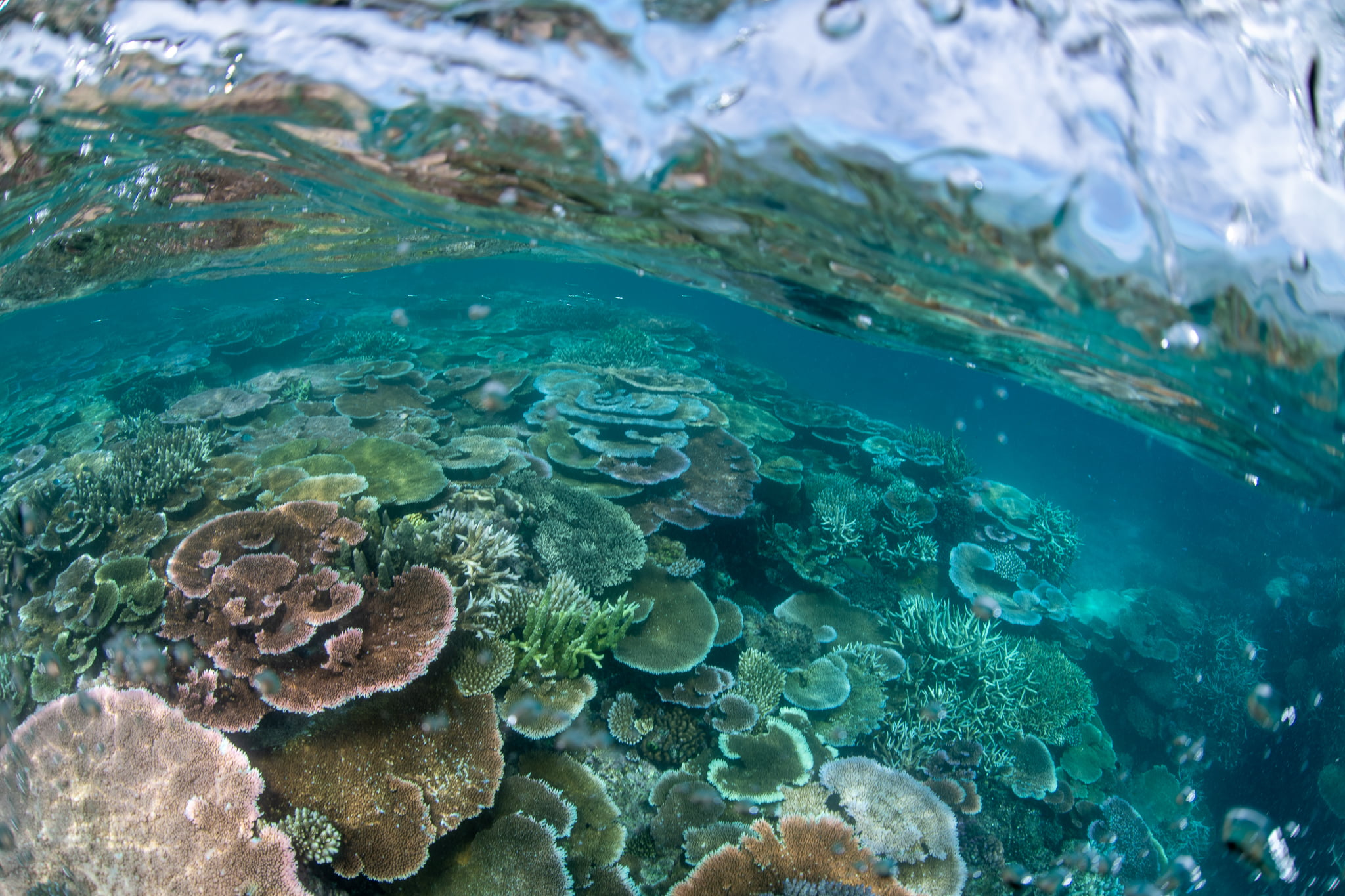THE FILM
As United Nation’s experts jetted into Australia in March 2022 to assess the state of the Great Barrier Reef, John Brewer Reef was making headlines around the world as at the centre of a sixth mass coral bleaching. Local biologists and film makers, Jennifer Marohasy and Stuart Ireland, recorded the conditions of the corals through macro photography and transect videography on location on 12th April 2022. Their resulting short documentary – A Coral Bleaching Tragedy – premiered at the New Farm Cinemas in Brisbane on 24th July 2022 in a private screening sponsored by the Institute of Public Affairs and Australian Institute for Progress.
The film shows that contrary to established narratives, heat stress had caused the corals at John Brewer Reef to become more colourful. The film explains the concept of ‘colourful bleaching’ and shows how beige coloured corals at other reefs including Heron Island have been falsely depicted as white by striping colours in post-production.
Aerial drone photographs taken on 12th April 2022 by Stuart Ireland at altitudes of 5, 10, 20, 40 and 120 metres with Jennifer Marohasy floating above the corals at the John Brewer reef crest show the impossibility of accurately scoring the extent of coral bleaching from an aeroplane window. Yet this is the basis of the aerial surveys rating John Brewer Reef as 31 to 60 % bleached.
A process and budget for the distribution and marketing of the film is under negotiation including to facilitate the production of a short trailer, DVDs, and future cinema screenings.
The seven natural wonders of the world include The Great Barrier Reef.
Our Great Barrier Reef!
As a Queenslander, I have always thought that I have a special responsibility to know and care about the corals at the Great Barrier Reef, and also the fishes.

And if you care about something, I have always said, that you should want to know everything about it.
So, when I am told that there is a coral reef that has bleached stark white, I want to go and see, and know what has happened. How it looks when it is so distressed, how it is dying, and if there is any chance it can be saved.
So, when I heard John Brewer Reef was the centre of a sixth mass bleaching I wanted to visit.
It was all over the new that the Great Barrier Reef was dying, with The Guardian making special mention of John Brewer Reef.
Aerial surveys, mostly using helicopters, were completed by the Australian Institute of Marine Science (Aims) and Great Barrier Reef Marine Park Authority (GBRMPA) on Wednesday along the entire 2,300km length of the marine park covering about 750 individual reefs.
The marine park is divided into four management areas, and Wachenfeld said there was widespread bleaching in all four zones. “Therefore, we can confirm this is the fourth mass bleaching event since 2016 and also the first under La Niña condition,” he said.
Dr Neal Cantin, an Aims research scientist, led one of two observing teams and personally observed reefs from helicopters across 1,800km.
Between the Whitsunday Islands and Cooktown he said he “did not fly over a reef and score it as ‘no bleaching’”.
Reefs closer to the shore between the Whitsunday Islands to Cooktown had seen the most extreme bleaching, but the “spatial footprint of severe bleaching is very wide”.
Most reefs along that stretch were recorded as “severe”, which means at least 60% of an individual reef’s corals had bleached. Some of those reefs also had corals that had bleached and then died in the last few weeks.
But even within this, there was variability between reefs and across individual coral colonies. Bleaching in the southern section of the marine park was much milder than elsewhere, and there were some reefs there with no bleaching at all.
Coral bleaching happens when the animal becomes stressed from above-average water temperatures. The coral animal expels the algae that lives inside them and provides the coral with food and colour.
I am privileged that because of the Institute of Public Affairs, and donations from so many generous supporters including to Peter Ridd’s Real Science program, we had the funding to plan that trip. And because of the support of the B. Macfie Family Foundation, I was able to pay for one of Australia’s best underwater cinematographers, Stuart Ireland, to be part of the expedition.
I do remember Scott Hargreaves, now the Executive Director at the IPA querying:
Do you really want to film that reef if it is in such bad a state – dead and dying?
That reef, John Brewer Reef, was repeatedly described back in March 2022 as at the centre of a sixth mass bleaching.
Dying is not meant to be beautiful. Corals are not meant to bleach colourful.
As I show in the film, A Coral Bleaching Tragedy, the tragedy is not with the corals but how that coral reef has been so misreported and so misunderstood.
The corals at John Brewer Reef through March and April 2022 were putting on a spectacular and colourful show while local and international media falsely reported them as having turned stark white.
The film also demonstrates the nonsense of attempting to determine the health of a coral from an aeroplane as reported in recent official surveys. To know the true state of the corals it is necessary to get into and under the water.
The Australian Institute of Marine Science (AIMS) have been tasked with reporting on the state of the corals and coral cover. They surveyed John Brewer Reef in March, made no mention of any coral bleaching in their report, and stated coral cover to be just 21.8%.
The area I swam for the film was focused on the northern lagoon.


Then they changed the area purportedly surveyed and have refused to clarify or agreed to any interview or meeting – on or off camera.
Dr Jennifer Marohasy
23rd July 2022


 Jennifer Marohasy BSc PhD is a critical thinker with expertise in the scientific method.
Jennifer Marohasy BSc PhD is a critical thinker with expertise in the scientific method.
